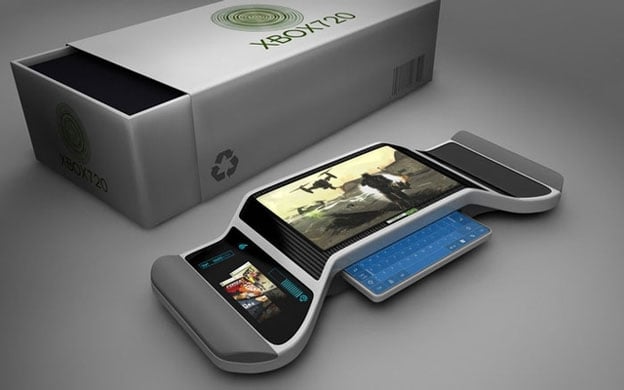The Next Xbox – What We Know And Suspect
The next Xbox is the worst kept secret in gaming. We know it’s coming, since it’s impossible for Microsoft to have gotten this far into a console generation without putting at least a few designs up on the drawing board. Compound this with suspicious activity on the part of the corporation itself, as well as some of its manufacturing and development partners (such as Flextronics, which is apparently working on a new Microsoft product, the team for which is kept segregated from the rest of the company; Flextronics, by the way, has also been used by Microsoft in the manufacturing process for both the original Xbox and its successor) and you’re left with a fairly obvious conclusion: Yes, the next generation of Microsoft gaming hardware is coming.
Unfortunately, though the device’s existence is certainly an ill-kept secret, its actual functionality is still mostly up in the air, current rumors dipping fairly heavily into the realm of hearsay. The single most solid thing that one can say about what the gaming media has dubbed the “Xbox 720” (the company’s internal codename for it is purportedly “Durango”) is that Microsoft is strongly considering a sort of used game lockout on the console. With the proliferation of broadband and the widespread acceptance of Internet connectivity in consoles, we’ve seen a refocusing of console games toward the multiplayer sector, to take full advantage of those capabilities. Even games that aren’t multiplayer are likely to have DLC. Both of these have been repurposed as incentives against the purchase of used software, locking either content or online play (if not both) behind a single-use code that buyers of used games must obtain separately for a more-than-insignificant fee. The next Xbox is likely to require either an always-on Internet connection or some form of activation for new titles, condemning the used market and its proponents to fade away with the current generation.

Of course, that assumes that the system uses a physical medium. It’s certainly possible that the next Xbox will be a digital-download based device, which would cut out used game sales entirely (as well as most of the need for brick and mortar retailers), but it seems unlikely. We’ve already reached a point at which some games are demanding more space than a single, dual-layer DVD can accommodate, and the next generation’s games are only going to expand. The sheer amount of time required to download a title that runs into the tens of gigabytes is going to try most people’s patience and, even if it doesn’t, it demands a lot of storage space if one wishes to maintain a sizeable library. More likely propositions: the next Xbox could include a Blu-Ray drive or, to avoid paying Sony for their medium, it might use a form of “cartridge,” a la the Vita. Solid state storage has speed benefits, too, though it tends to be on the expensive side.
And then there’s the question of how it’s going to interact with the consumer. Quite literally, in fact, as Microsoft is still pushing its Kinect pretty hard, and that was a development late in this generation. Word has it that “Durango” is aiming to integrate the next iteration of the controller-free motion device into its functionality from day one, providing a base experience more strongly geared toward it. As long as that means the sensitivity and capabilities of the device are improved and expanded, I think it’s something that gamers can get on board with. Will it entirely eschew traditional controllers for a hands-free solution? Very unlikely, until someone figures out how to navigate a three-dimensional space effectively without the use of an analog stick. It hasn’t been accomplished yet, and seems like one of those watershed limitations that will demand a tremendous “aha!” moment to overcome.
One thing that hasn’t been discussed too much is the cost. This, inevitably, brings one to the hardware itself, since that determines the cost. Rumors that it won’t have a hard drive seem suspect at best, as downloadable content looks like it’s here to stay, and people aren’t keen on buying memory anymore. Word that its graphics processor will be based off of AMD’s 7000-series architecture is certainly feasible, seeing as Microsoft switched from Nvidia in the first console to ATI in the 360 (ATI now being owned by AMD), though if it truly uses that and an AMD x86 CPU as proposed, it would have little to distinguish it from a PC on an architectural level, relying purely on its operating system and software to make up the difference. The lack of proprietary technology would, however, allow for the system to be released at a relatively low price. This is another angle the system is reported to take, aiming to be smaller and cheaper than its predecessor was when it launched.
Or maybe it will be inexpensive because Microsoft will focus on a different business model. After rumors last week, Microsoft confirmed the existence of a subsidized console plan , in which buyers could receive an Xbox 360 with the Kinect sensor for one-third of its normal cost. This was accompanied by a mandatory two-year contract for Xbox LIVE Gold, at a rate of $15 a month, three times as much as the monthly breakdown for purchasing a year at once. This reeks of an experiment, testing the waters for the next generation of hardware, to see if such a concept is feasible and attractive to consumers. Sony arguably did something similar with the PSP and the Vita by releasing the PSP Go, which relied entirely on digital distribution for its software—something of which the Vita is a staunch supporter, though not an absolute one.

Regardless of what is accurate and what is mere rumor, it pays to remember that Microsoft has never balked from its statement that the Xbox 360 would be a ten-year system, placing its death sometime in 2015. This doesn’t necessarily mean that its successor will wait in the wings until then, much as the PlayStation 2 continued to receive support long after the PlayStation 3 had launched, but it seems fairly likely that Microsoft will draw out the announcement of its new hardware until at least later this year, and we probably won’t see the device itself on shelves until sometime in at least late 2013.
The one thing we know absolutely for sure? Microsoft has stated that there will be no news about the Xbox’s successor at next month’s E3. They wouldn’t lie to us, would they?
 | By Shelby Reiches Contributing Writer Date: May 9, 2012 |
*The views expressed within this article are solely the opinion of the author and do not express the views held by Cheat Code Central.*
